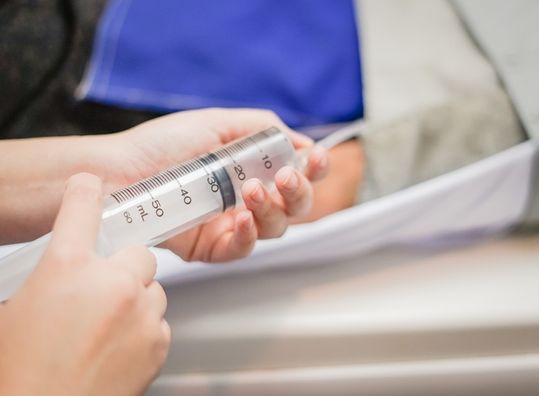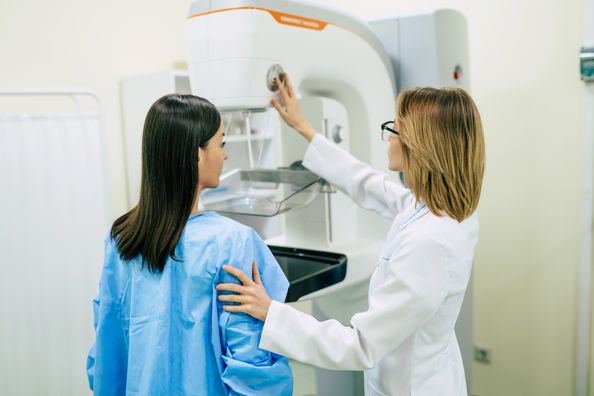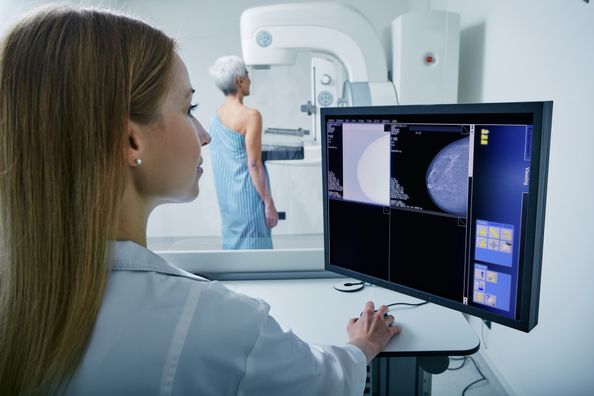A doctor may order a contrast dye to be used during some MRI exams in order for the radiologist to better view internal tissues and blood vessels on the completed images. Contrast materials are not dyes that permanently discolor internal organs. They are substances that temporarily change the way MRIs, X‑rays or other imaging tools interact with the body. Often, contrast materials allow the radiologist to distinguish normal from abnormal conditions.
When introduced into the body prior to an imaging exam, contrast materials make certain structures or tissues in the body appear different on the images than they would if no contrast material had been administered. Contrast materials help distinguish or “contrast” selected areas of the body from surrounding tissue. By improving the visibility of specific organs, blood vessels or tissues, contrast materials help physicians diagnose medical conditions. In some cases, an injection of a special contrast dye is given into the bloodstream via a vein on the arm. This helps to give more information about the certain tissues or organs being examined.
Usually, you will be advised before you have the MRI scan that partway through the scan, a contrast medium will be injected. Sometimes, based on the notes provided by your doctor on your referral, it will not indicate that you require a contrast injection, but after some of the scanning is done, the radiologist may decide that gadolinium would help to make the imaging diagnosis clearer. If you are told that contrast will be needed, you should not worry that this is an indication that something is seriously wrong. Most often this is just being done to give more information for interpretation so that the diagnosis is more definitive.
If a gadolinium injection is given, some preliminary scans are required immediately prior to the gadolinium injection and it is important to lie still between these scans and the gadolinium injection. A gadolinium contrast medium is given by intravenous injection, that is, through a small needle into a vein in your arm. You will either be brought outside the machine while on the scan table so the contrast can be hand-injected by the technologist who performs the MRI scan, or while you remain in the scanner by a mechanical injector by an automated injector through an IV placed in your arm prior to the beginning of the exam. More scans will then be taken to complete the exam.
Gadolinium contrast medium is generally very safe. Most patients will not notice any sensations, although a small number will report a cold feeling in the arm during the injection. The most common side effects of a brief headache, nausea and dizziness only occur in a small number of patients for a brief time following the injection. Reactions such as hives tend to occur within several minutes of the injection, when a patient is most likely in the scanner or still in the radiology department. Allergic (anaphylactic) reactions to gadolinium contrast medium have occurred but are extremely rare. Severe reactions, which may involve difficulty breathing and swelling of the lips and mouth, occur in about 1 in every 10,000 people who have gadolinium. These severe reactions generally respond very well to emergency drug treatment.
Gadolinium contrast medium is used in up to 30% of MRI scans to improve the diagnostic accuracy of the MRI scan or images of your body’s internal structures. For example, it increases the visibility of inflammation, a tumor or growth, blood vessels, cardiac (heart) muscle scarring and assesses the blood flow to organs such as the brain, abdomen and heart. If you have any concerns about the use of gadolinium, please discuss these with your referring doctor and the staff where you are having your procedure.
Health Topics:







